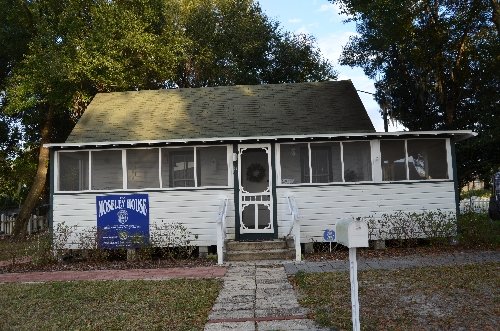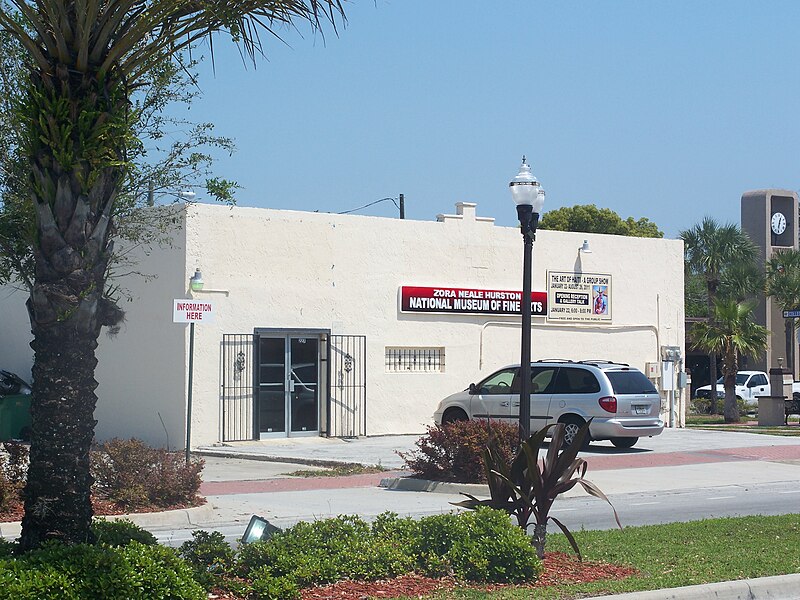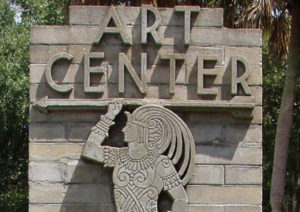First School House (photo taken 2006)
I thought today that we’d look at a Central Florida Town that’s not a household word but is very important in the state’s as well as the country’s History
Eatonville, Florida: A Historic Town Sets its Eyes on the Future
Eatonville was incorporated August 18, 1888 as a Black Community, if not the first in the country it is said to be the first to be incorporated.
In January 22, 1889, The Eaton Speaker gave the purpose of the town in an Ad,
“Colored people of the United States–Solve he great race problem by securing a home in Eatonville, Florida. A Negro city governed by Negroes.”
Eatonville is a community of 2,147 with the majority being of African-American descent. But interestingly enough the name of the town is from a white man: Captain Joshua C. Eaton, who came from Maine and settled in nearby Maitland. He was a Navy paymaster who retired to Florida and settled with other Union Veteran retirees. Maitland was also unusual for the time as it had a black mayor–As black and white veteran joined together to elect J.E. Clarke to the office.
And it was Clarke, with the help of Eaton and two other white Union Veterans, that went on to establish the all black town on a 500 acre tract west of Maitland that they bought together. Clark had tried to set up a community for these freed slaves prior to this in Florida but it had failed to survive.
Eatonville most famous citizen was born to John Huston, a carpenter and Baptist preacher and it was his daughter Zora Neale Huston who would actually put the town in the national attention when she wrote about it in her autobiography “Dust Tracts on the Road”
and an impression of her life appears in her other books including Mules and Men
It has been said (by Novelist Theodore Pratt) that Zora Neale Huston was the “only first-class native-born Florida author.”
Zora Neale Hurston Hometown Tour
A C-SPAN school bus crew toured author Zora Neale Hurston’s hometown of Eatonville, Florida and talked to residents about the town and her experiences there.

“Sometimes, I feel discriminated against, but it does not make me angry. It merely astonishes me. How can any deny themselves the pleasure of my company? It’s beyond me.”
―

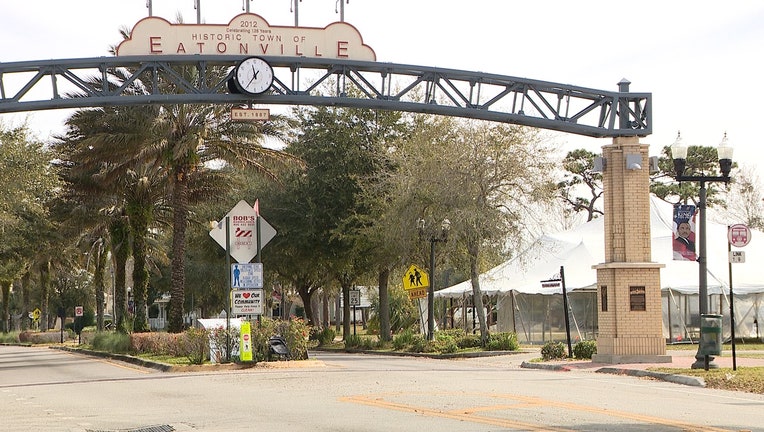
But let’s look a little closer—so in August 1897—27 registered voters–all black men, met in a building (called Town Hall) and they all voted to incorporate the town.
But to really understand you have to go back a period shortly after the Civil War when recently freed slaves found their way to Central Florida searching for work to allow them to survive. They like the white settlers, cleared land , planted crops as well as citrus groves as well as building houses to live in and many found work with Central Florida’s first railroad company.
Many of these black settler when they first arrived built simple, quickly assembled shacks around John’s Hole in Maitland—-this would eventually become the lovely Lake Lily which now houses a couple of museum and a lovely walking area as part of one of Maitland’s city parks.—-Later they built more permanent homes west of Maitland.
Setting: Eatonville, Florida
In this video from the American Masters film Zora Neale Hurston: Jump at the Sun, students will learn about Eatonville, Florida—Zora Neale Hurston’s hometown and the setting of her most famous novel, Their Eyes Were Watching God.

How African American Art and Culture Blossomed During the Harlem Renaissance
-
Zora was born on January 7, 1891 to John, whom we have already mentioned and Lucy Potts Hurston, a seamstress. But she was not meant for Eatonville for long—by her teens she had joined a company of actors and went with them to Harlem in New York and the Harlem Rennissance. ‘
She would eventually attend Howard University and graduate from Barnard (1928) and go on for graduate study at Columbia University. She would write several books, teach drama at Bethune-Cookman College in Daytona, Fl. Collect folklore in her native Florida as well as Haiti, Jamaica, Bermuda and Hondorus. She was a staff writer for Paramount in LA and worked as a freelance writer for a time. A librarian at the Library of Congress, a newspaper woman in Ft. Pierce as well as teaching drama at North Carolina College (Now North Carolina Central University) and there is much more she accomplished or studied or collected
She passed away in January 1960 in Ft. Pierce and is buried there.
Zora Neale Hurston’s Eatonville
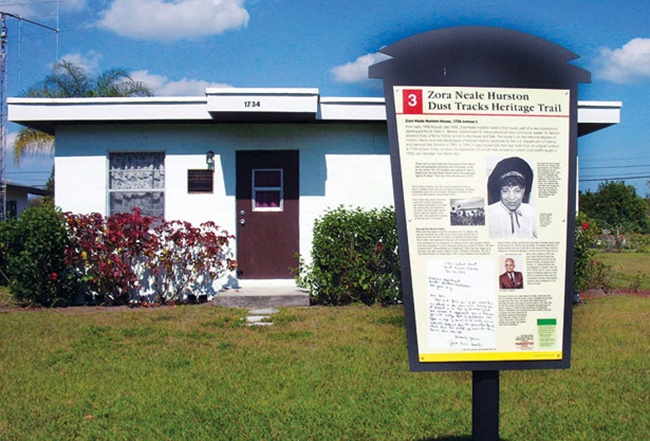
The first 10 acres of the land Lawrence purchased were given to the trustees of the Methodist Church, known today as the St. Lawrence African Methodist Episcopal Church. Founded in 1881, St. Lawrence was the first African American church in the area.

New Location:
344 East Kennedy Boulevard – 1st Floor
Picture above is the old museum….sorry
Eatonville, FL 32751
407-647-3307
COVID-19 HOURS:
11 AM – 2 PM, Monday – Friday
Mask, Social Distancing & Hand Sanitation Observed

Russel C. Calhoun opened the Robert Hungerford Normal Industrial School for blacks in 1987 in Eatonville. It was named for a physician who served the black community, it was run as a private boarding school and focused on industrial education until 1950. Although the original school is no longer present, the name still lives on as the name of an elementary school in Eatonville.
Eatonville by the way is located a few miles north of Orlando via 1-4 Exit at Lee Road turn right and follow it to Orlando Ave, then left to another left at Kennedy Blvd. The town’s main street.

Eatonville is integrally related to the African American traditional culture which has endured there through generations despite physical changes in the town.
Florida Heritage 6/15/00

Of the more than one hundred black towns founded between 1865 and 1900, fewer than twelve remain today and Eatonville is the oldest.
Florida Heritage
Driving on Kennedy Blvd through historic Eatonville, Florida
The Zora Neale Hurston Festival of the Arts and Humanities: This annual event has become internationally recognized as premier festival celebrating the heritage and culture of African-descended peoples.
History of the Association to Preserve Eatonville Community, Inc.
Take a 1.2 mile expedition into early Eatonville as told through the eyes of “Eatonville’s daughter,” Zora Neale Hurston.
Constructed in 1888, The Moseley House is the second oldest structure in the town of Eatonville. As of the year of 2000, the house was restored and is currently maintained by the Zeta Educational Thespian Association, Inc. and the Florida State Leadership Conference, Zeta Phi Beta Sorority, Incorporated. The location is currently opened as a museum and exhibits early Eatonville memorabilia.
African-American History & Culture in Orlando
go to the web site: https://www.jamesmadison.org/the-history-and-legacy-of-eatonville-floridas-pioneering-african-american-town/



